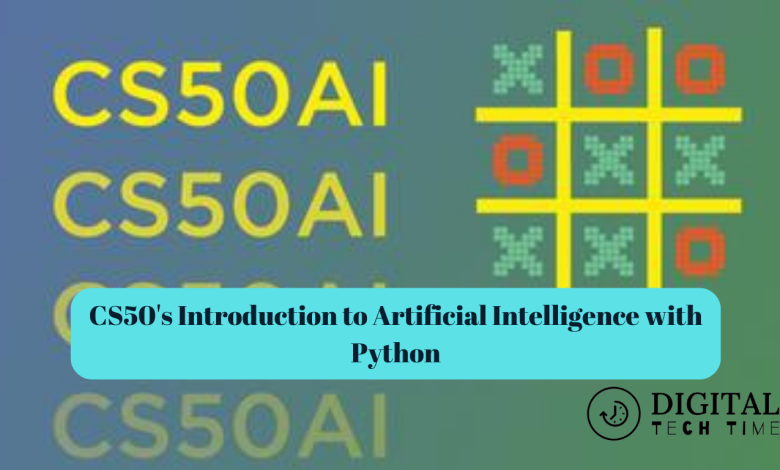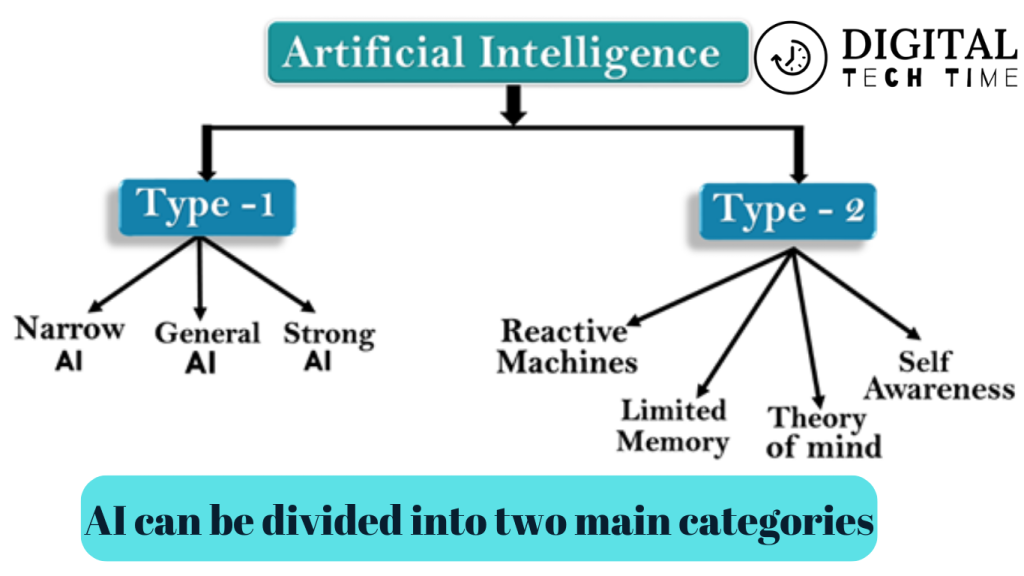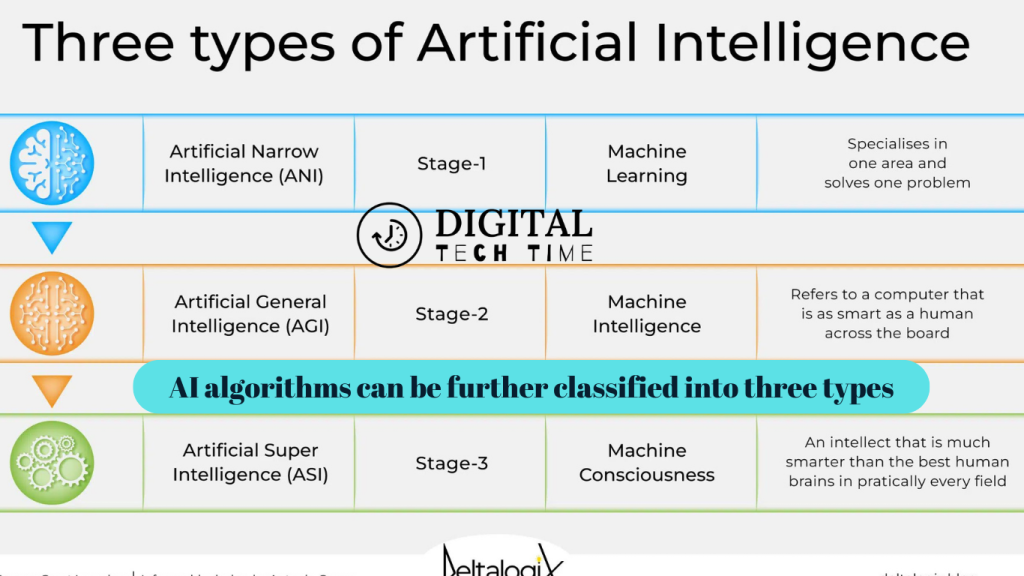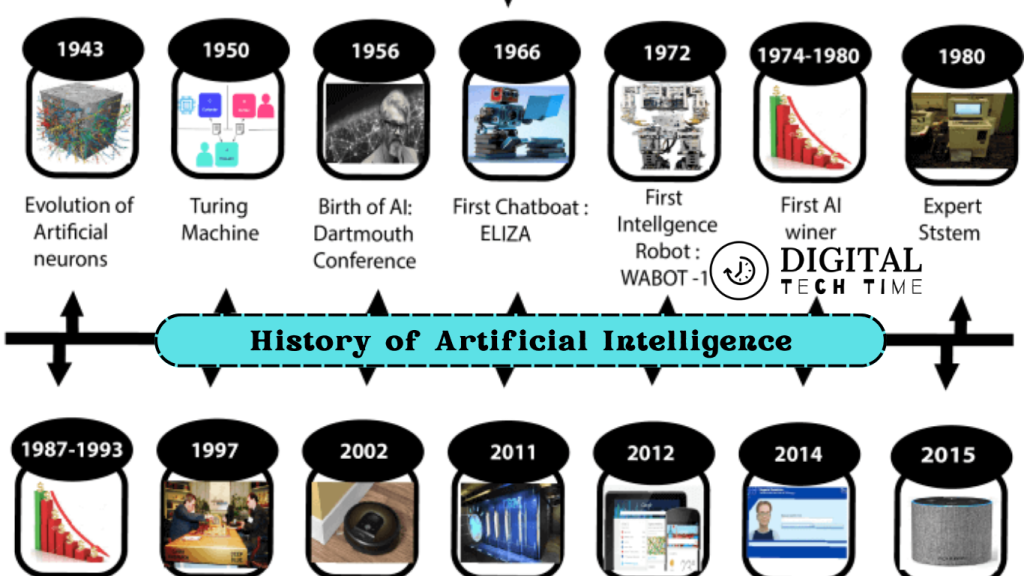CS50’s Introduction to Artificial Intelligence with Python: A Comprehensive Guide

CS50’s Introduction to Artificial Intelligence with Python is a course offered by Harvard University that explores the fundamental concepts and algorithms underlying contemporary artificial intelligence (AI). The course delves into the ideas that give rise to technologies such as game-playing engines, handwriting recognition, and machine translation. It is an introductory course that covers the basics of AI and machine learning, including Python programming for AI, neural networks, natural language processing, and AI in game playing.
The course is designed to provide students with a solid understanding of AI and its potential applications. It is taught by Brian Yu, a renowned computer science instructor, and is available online for free. The course is self-paced and can be completed in seven weeks, with a time commitment of 10-30 hours per week. Students who successfully complete the course will receive a certificate of completion from Harvard University.
Key Takeaways
- CS50’s Introduction to Artificial Intelligence with Python is a comprehensive course that covers the basics of AI and machine learning.
- The course is self-paced and can be completed in seven weeks, with a time commitment of 10-30 hours per week.
- Students who successfully complete the course will receive a certificate of completion from Harvard University.
Understanding Artificial Intelligence
Artificial Intelligence (AI) is a field of computer science that aims to create intelligent machines that can perform tasks that typically require human intelligence. This includes tasks such as speech recognition, decision-making, and language translation. AI is a rapidly growing field that has the potential to revolutionize many industries, from healthcare to finance to transportation.

Basics of AI
AI can be divided into two main categories: narrow or weak AI and general or strong AI. Narrow AI is designed to perform specific tasks, such as playing chess or recognizing faces in photos. General AI, on the other hand, is designed to perform any intellectual task that a human can do. While narrow AI is already widely used in many industries, general AI is still largely in the realm of science fiction.

AI algorithms can be further classified into three types: supervised learning, unsupervised learning, and reinforcement learning. Supervised learning involves training an algorithm on a labeled dataset, where the correct output is already known. Unsupervised learning involves training an algorithm on an unlabeled dataset, where the correct output is unknown. Reinforcement learning involves training an algorithm to make decisions based on feedback from its environment.

History and Evolution of AI
The history of AI dates back to the 1950s when researchers first began exploring the possibility of creating machines that could think like humans. In the decades that followed, AI research experienced several ups and downs, with periods of intense progress followed by periods of stagnation.

In recent years, however, AI research has experienced a resurgence, thanks in large part to advances in machine learning and the availability of large datasets. Today, AI is being used in a wide range of applications, from self-driving cars to virtual assistants to medical diagnosis.
Despite the many benefits of AI, there are also concerns about its potential impact on society. Some worry that AI could lead to widespread job loss, while others are concerned about the potential for AI to be used for malicious purposes. As AI continues to evolve, it will be important for researchers, policymakers, and the public to work together to ensure that it is used in a responsible and ethical manner.
Python Programming for AI
Python is one of the most popular programming languages for artificial intelligence (AI) and machine learning (ML) due to its simplicity, ease of use, and versatility. It is a high-level language that allows developers to write concise, readable code, making it easy to understand and maintain.
Python provides a vast array of libraries and frameworks that are specifically designed for AI and ML, such as TensorFlow, Keras, and PyTorch. These libraries offer powerful tools for data manipulation, visualization, and analysis, as well as for building and training deep neural networks.
In CS50’s Introduction to Artificial Intelligence with Python course, students will learn how to use Python to implement various AI techniques, including search algorithms, optimization algorithms, and reinforcement learning. They will also learn how to use these techniques to solve real-world problems, such as game playing and natural language processing.
To get started with Python programming for AI, students should have a basic understanding of programming concepts such as variables, functions, and control structures. They should also be familiar with Python syntax and data types. The CS50’s Introduction to Computer Science course is a great way to gain this foundational knowledge.
Once students have a solid understanding of Python programming, they can dive deeper into the world of AI and ML by exploring different libraries and frameworks. They can also experiment with different algorithms and techniques to see how they perform on different datasets.
Overall, Python programming is an essential skill for anyone interested in AI and ML. With its simplicity, versatility, and powerful libraries, Python is the perfect language for building intelligent applications that can solve complex problems.
Machine Learning Basics
Machine learning is a subset of artificial intelligence that allows computer systems to learn and improve from experience without being explicitly programmed. This is achieved by providing the computer system with a large amount of data and algorithms that enable it to learn patterns and make predictions based on that data.

Supervised Learning
Supervised learning is a type of machine learning where the computer system is provided with labelled data, which means that the data is already categorized or classified. The computer system uses this labelled data to learn patterns and make predictions on new, unlabeled data.
In supervised learning, the computer system is trained using a set of input data and corresponding output data. The goal is to learn a function that maps the input data to the output data. This function can then be used to make predictions on new, unseen data.
Unsupervised Learning
Unsupervised learning is a type of machine learning where the computer system is provided with unlabeled data, which means that the data is not categorized or classified. The computer system uses this unlabeled data to learn patterns and make predictions based on that data.
In unsupervised learning, the computer system is not given any specific output data to learn from. Instead, it is left to find patterns and relationships in the input data on its own. This can be useful in situations where the data is not labelled or where the desired output is not known.
Reinforcement Learning
Reinforcement learning is a type of machine learning where the computer system learns through trial and error. The computer system is provided with an environment and a set of actions it can take in that environment. The goal is to learn the best sequence of actions to take in order to achieve a specific goal.
In reinforcement learning, the computer system receives feedback in the form of rewards or punishments for each action it takes. The goal is to learn the best sequence of actions to take in order to maximize the rewards and minimize the punishments. This can be useful in situations where the optimal solution is not known beforehand.
Overall, machine learning is a powerful tool that can be used to make predictions and gain insights from data. By understanding the basics of supervised learning, unsupervised learning, and reinforcement learning, you can begin to explore the potential of machine learning in your own projects and applications.
Neural Networks
Neural networks are a type of machine learning algorithm that is inspired by the structure and function of the human brain. They are designed to recognize patterns and make predictions based on input data. In CS50’s Introduction to Artificial Intelligence with Python, students learn about the basics of neural networks and how they can be used in deep learning.
Basics of Neural Networks
The basic structure of a neural network consists of layers of interconnected nodes, or neurons. Each neuron receives input from the previous layer and produces output for the next layer. The output of the final layer is the prediction or classification of the input data.
Neural networks are trained using a process called backpropagation. During training, the network adjusts the weights of the connections between neurons to minimize the difference between its predictions and the actual output. This process is repeated until the network achieves a satisfactory level of accuracy.
Deep Learning
Deep learning is a type of neural network that consists of multiple layers. These layers allow the network to learn complex representations of the input data. Deep learning has been used to achieve state-of-the-art results in a variety of applications, including image and speech recognition.
One of the challenges of deep learning is overfitting, where the network becomes too specialized to the training data and performs poorly on new data. Techniques such as regularization and dropout can be used to prevent overfitting.
Overall, neural networks and deep learning are powerful tools for solving complex problems in artificial intelligence. CS50’s Introduction to Artificial Intelligence with Python provides a comprehensive introduction to these topics, allowing students to develop the skills necessary to apply them in real-world applications.
Natural Language Processing
CS50’s Introduction to Artificial Intelligence with Python covers a wide range of topics, including Natural Language Processing (NLP). NLP is a subfield of AI that deals with the interaction between computers and humans using natural language. This field has gained significant attention in recent years due to the increasing use of chatbots, virtual assistants, and voice recognition systems.
NLP involves several tasks, such as sentiment analysis, text classification, and information extraction. Sentiment analysis is the process of determining the emotional tone of a piece of text, while text classification involves assigning a label to a text based on its content. Information extraction, on the other hand, involves identifying and extracting relevant information from a large corpus of text.
One of the most significant challenges in NLP is dealing with the ambiguity and complexity of natural language. Words can have multiple meanings, and the same sentence can have different interpretations depending on the context. To overcome this challenge, NLP systems use various techniques such as part-of-speech tagging, named entity recognition, and semantic analysis.
Part-of-speech tagging involves assigning a part of speech to each word in a sentence, such as noun, verb, adjective, etc. Named entity recognition involves identifying specific entities in a text, such as names of people, places, organizations, etc. Semantic analysis involves understanding the meaning of a sentence by analyzing the relationships between words.
Overall, NLP is a fascinating field that has the potential to revolutionize the way we interact with computers. CS50’s Introduction to Artificial Intelligence with Python provides an excellent introduction to the fundamental concepts and techniques of NLP, making it an ideal starting point for anyone interested in this exciting field.
AI in Game Playing
CS50’s Introduction to Artificial Intelligence with Python covers a range of techniques that give rise to technologies like game-playing engines. The ability of AI to play games has been a popular research area for several decades. AI-powered game-playing engines have been developed for a wide variety of games, ranging from traditional board games like chess and Go to modern video games.
One of the earliest examples of an AI-powered game-playing engine is Deep Blue, which defeated world chess champion Garry Kasparov in 1997. Deep Blue was a specialized computer program that used brute-force search techniques to evaluate millions of possible moves and select the best one. Since then, AI-powered game-playing engines have become much more sophisticated and can use a variety of techniques to improve their performance.
One of the most popular techniques used by game-playing engines is reinforcement learning. In reinforcement learning, the AI agent learns to take actions that maximize a reward signal. For example, in a game of chess, the reward signal could be the number of pieces captured or the number of moves made. The AI agent learns to take actions that lead to a higher reward signal over time.
Another popular technique used by game-playing engines is Monte Carlo Tree Search (MCTS). MCTS is a search algorithm that builds a tree of possible moves and their outcomes. It then uses a selection policy to choose the most promising move and simulates the game to the end of that move. The results of the simulation are used to update the tree and choose the next move.
AI-powered game-playing engines have also been developed for modern video games. These engines use techniques like deep learning to learn from large amounts of data and improve their performance. For example, an AI-powered game-playing engine could learn to play a first-person shooter game by observing human players and learning their strategies.
Overall, AI-powered game-playing engines have come a long way since the days of Deep Blue. With the help of techniques like reinforcement learning and Monte Carlo Tree Search, these engines can now play a wide variety of games at a high level.
Ethics in AI
As the field of artificial intelligence (AI) continues to grow and evolve, it is important that we consider the ethical implications of its use. AI has the potential to greatly benefit society, but it also has the potential to cause harm if not used responsibly.
One of the main ethical concerns surrounding AI is bias. AI algorithms are only as unbiased as the data they are trained on. If the data contains biases, then the AI will also be biased. This can lead to unfair treatment of certain groups of people. It is important that the data used to train AI is diverse and representative of all groups.
Another ethical concern is privacy. AI has the ability to collect and analyze vast amounts of personal data. It is important that this data is collected and used responsibly, with the consent of the individuals involved. There must also be measures in place to protect this data from being accessed by unauthorized parties.
Transparency is also an important ethical consideration in AI. It is important that the decision-making processes of AI algorithms are transparent and explainable. This allows individuals to understand why a certain decision was made and to challenge decisions that may be unfair or biased.
Finally, there is the concern of job displacement. As AI becomes more advanced, it has the potential to automate many jobs that are currently done by humans. It is important that society prepares for this possibility and takes steps to mitigate the negative effects of job displacement.
In conclusion, while AI has the potential to greatly benefit society, it is important that we consider the ethical implications of its use. It is crucial that AI is developed and used responsibly, with the goal of benefiting all members of society.
Future of AI
Artificial Intelligence (AI) has been rapidly advancing over the past few years, and the future of AI looks promising. With the development of new technologies and the increasing amount of data available, AI is expected to revolutionize various industries.
One of the biggest advancements in AI is the development of machine learning algorithms. These algorithms enable machines to learn from data and improve their performance over time. As more data becomes available, machine learning algorithms will become even more powerful, enabling machines to make more accurate predictions and decisions.
Another area of AI that is expected to see significant growth is natural language processing (NLP). NLP is the ability of machines to understand and interpret human language. With the increasing amount of data available in natural language, NLP is becoming increasingly important in various industries, including healthcare, finance, and customer service.
AI is also expected to have a significant impact on the job market. While some jobs may become obsolete due to automation, AI is also expected to create new job opportunities. As machines become more advanced, there will be a growing demand for individuals who can design, build, and maintain these machines.
In conclusion, the future of AI looks bright. With the development of new technologies and the increasing amount of data available, AI is expected to revolutionize various industries and create new job opportunities. While there may be some challenges along the way, the potential benefits of AI are enormous.
Learn more about Artificial Intelligence (AI)
Frequently Asked Questions
What are the benefits of taking CS50’s Introduction to Artificial Intelligence with Python?
CS50’s Introduction to Artificial Intelligence with Python is a course that explores the concepts and algorithms at the foundation of modern artificial intelligence. By taking this course, you will gain a solid understanding of the ideas that give rise to technologies like game-playing engines, handwriting recognition, and machine translation. You will also learn how to build intelligent agents and apply machine-learning techniques to solve real-world problems.
How does CS50’s Introduction to Artificial Intelligence with Python compare to other AI courses?
CS50’s Introduction to Artificial Intelligence with Python is a highly regarded course that is taught by experienced instructors. It covers a wide range of topics, including machine learning, natural language processing, and computer vision. The course is designed to be accessible to beginners but also provides enough depth for those with more experience in the field.
What are the prerequisites for CS50’s Introduction to Artificial Intelligence with Python?
There are no formal prerequisites for CS50’s Introduction to Artificial Intelligence with Python. However, it is recommended that students have some programming experience in Python and a basic understanding of linear algebra and calculus.
How much time should I dedicate to CS50’s Introduction to Artificial Intelligence with Python?
The recommended time commitment for CS50’s Introduction to Artificial Intelligence with Python is approximately 10-20 hours per week. However, the actual amount of time required may vary depending on your prior knowledge and experience.
What kind of projects can I expect to work on in CS50’s Introduction to Artificial Intelligence with Python?
CS50’s Introduction to Artificial Intelligence with Python includes several projects that cover a wide range of topics, including search algorithms, game-playing agents, and natural language processing. These projects are designed to help you apply the concepts and techniques you learn in the course to real-world problems.
Is CS50’s Introduction to Artificial Intelligence with Python suitable for beginners?
Yes, CS50’s Introduction to Artificial Intelligence with Python is designed to be accessible to beginners. The course covers the fundamentals of artificial intelligence and provides a solid foundation for more advanced study in the field. However, some prior programming experience in Python is recommended.





